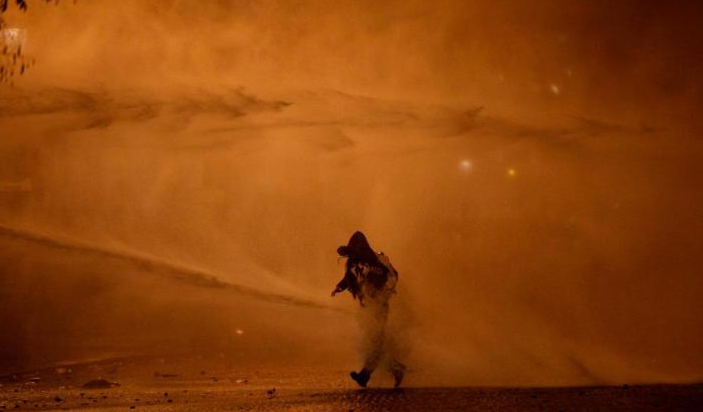More than 200 people were arrested and dozens were injured in Paris on Saturday after clashes erupted between police and protesters, according to a police spokesman.
French riot police fought running battles with “yellow vest” protesters in the streets of Paris, in the third weekend of nationwide unrest against high living costs that pose one of the gravest challenges of Emmanuel Macron’s presidency.
This protest is not as large as the previous one, last week and although an estimated 36,500 participants across the country they were smaller than those in weeks past, but considerably more violent. According to the French Interior Ministry, last week about 53,000 protestors participated, and there were about 113,000 the week before.
Police fired stun grenades, tear gas and water cannon at protesters at the top of the Champs-Elysees boulevard and multiple sites across the city including Opera and Place de la Bastille. More than a dozen metro stations were closed.
The popular rebellion erupted out of nowhere on Nov 17 and has been coordinated via social media, with protesters blocking roads across France and impeding access to shopping malls, factories and some fuel depots. Some are concerned that violent far-right and far-left groups may have infiltrated the movement.
This week the demonstrators came prepared and put up barricades in the surrounding areas, smashed some car windows and set alight dozens of vehicles, including a police car. A nearby restaurant was also set on fire.
Several hundred yellow vests, who have no leader, sat down under the Arc de Triomphe singing La Marseillaise, the national anthem, and chanting “Macron Resign!”
https://twitter.com/5NEWSJoe/status/1068924017082605568
In last weeks protests, the French police used heavy-handed techniques to quash the protestors and were criticised for their misuse use of police power. However, with G20 summit taking place in Buenos Aires, the French president is eager to quash this movement sooner rather than later.
The president said on Tuesday he understood the anger of voters outside France’s big cities over the squeeze fuel prices have put on households but insisted he would not be bounced into changing policy by “thugs”.
On Saturday, some targeted the Arc de Triomphe and other monuments.
Rising fuel prices are largely attributed to a leap in the wholesale price of oil. Brent crude oil — a benchmark for worldwide oil purchases — increased by more than 20% in the first half of the year, from around $60 a barrel to $86.07 in early October.
But the protests have evolved into a broader demonstration against French President Emmanuel Macron, his government and tensions between the metropolitan elite and rural poor.
The yellow vests, who enjoy widespread public support, get their name from the high-visibility jackets all motorists in France must carry in their vehicles.
[simple-payment id=”7912″]
On Saturday, some targeted the Arc de Triomphe and other monuments.Rising fuel prices are largely attributed to a leap in the wholesale price of oil. Brent crude oil — a benchmark for worldwide oil purchases — increased by more than 20% in the first half of the year, from around $60 a barrel to $86.07 in early October.But the protests have evolved into a broader demonstration against French President Emmanuel Macron, his government and tensions between the metropolitan elite and rural poor.






[…] The protests, named after the fluorescent safety jackets French motorists have to keep in their cars, erupted in November over the squeeze on household budgets caused by fuel taxes. Demonstrations swiftly grew into a broad, sometimes-violent rebellion against Macron, with no formal leader. […]
[…] the past month, France has seen cities in chaos, cars on fire, police using water cannons as violence and chaos have erupted out of control. French President Macron was left red-faced at […]